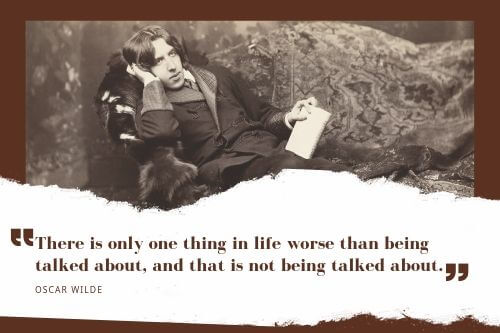
YouTube / iTunes / Spotify / Radio Public / Pocket Casts / Google Podcasts / Breaker / Overcast
Listen to ArtisanEnglish.jp posts & lesson intros here.
Proverb: There’s no such thing as bad publicity
Proverbs are supposed to be based on the wisdom of our ancestors.
Whether there’s no such thing as bad publicity is wisdom or not; I’ll leave it up to you to decide.
In a nutshell, it means it’s better to be known for the wrong reasons than not be known at all.
I suppose if you want to become a household name, then whether you’re famous or infamous doesn’t matter.
Either way, people are going to remember you.
As with most proverbs, the origin of this one is not known for sure.
It does resemble what the famous Irish poet and playwright Oscar Wilde said.
If you don’t know anything about Oscar Wilde, it would help if I told you he was married, had two children, and had male lovers.
Needless to say, he was famous for his work and infamous for his personal life.
There must have been a lot of gossip about him at the time.
Also, as a writer, he needed publicity to make money.
Perhaps that’s why he said, “There is only one thing in life worse than being talked about, and that is not being talked about.”
In North America, people think P.T. Barnum from the famous Barnum and Bailey Circus coined there’s no such thing as bad publicity, but there’s no way to prove he said it.
I suppose it’s possible that P.T. Barnum was paraphrasing Oscar Wilde, but the answer has been lost to history, and we’re only left with the proverb and not the origin.
This leaves me to wonder if the proverb is true or not.
Perhaps the Kim Kardashian Kimono Shapewear fiasco will help shed some light on whether it’s true.
She has received much bad publicity for trying to trademark the word kimono.
Has it hurt her or helped her?
Only time will tell.
Flesch-Kincaid Readability Test
This post is understandable by someone with at least a 7th-grade education (age 12).
On the Flesch-Kincaid reading-ease test, this post scores 75.
The easier a passage is to read, the higher the score on a scale of 0 – 100.

